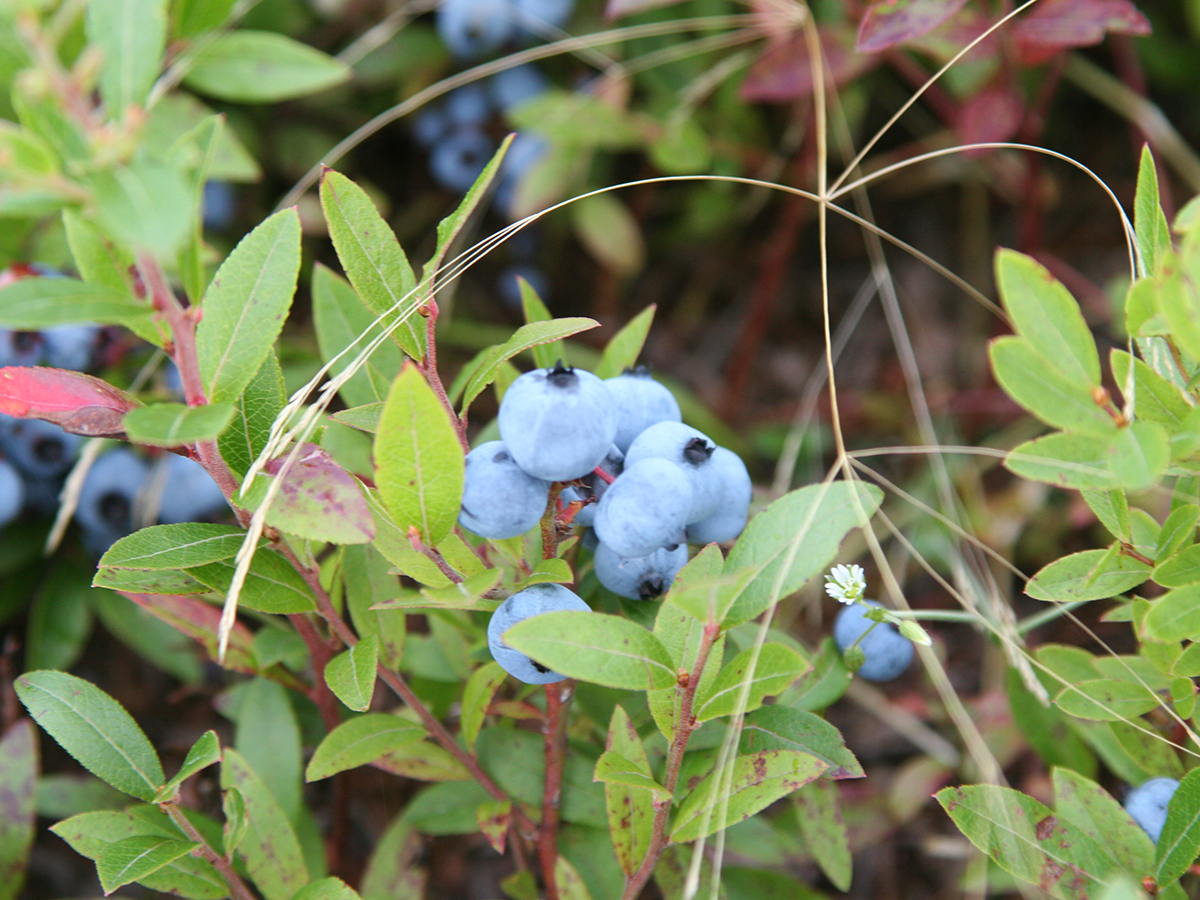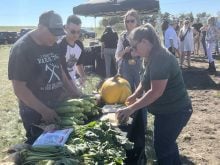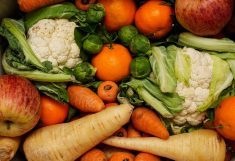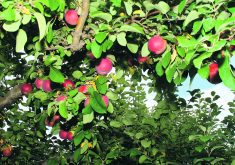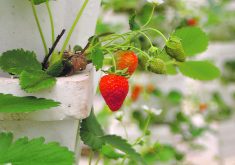Being a fruit or vegetable grower in a province primarily focused on cereals, pulses and canola means that new studies and research can be sparse. However, Forest Scharf proved there’s quite a few ideas coming out of Saskatchewan.
Scharf, Saskatchewan’s provincial fruit crops specialist, shared what he’s been working on with growers at a conference hosted by the Saskatchewan Fruit Growers Association and the Saskatchewan Vegetable Growers Association.
His three projects include:
- Training apples on trellis wire to create high density wall production systems.
- Containerized, soilless blueberry production.
- Fall urea application to improve the overwintering of sour cherries.
Each offers key insights and some recommendations for producers. These three were through the Agriculture Demonstration of Practices and Technologies (ADOPT) program, which typically gives funding for one year, but for perennial crops they grant two years.
Read Also

Crop quality looks good this year across Prairies
Crop quality looks real good this year, with the exception of durum.
Scharf’s apple trial built onto a previous project he’d been undertaking on rootstock varieties for Saskatchewan. During that trial, he’d experimented with a few different dwarfing rootstock varieties to maximize production area and ease harvest.
Now, those trees have grown and need support, especially since dwarfing rootstock means earlier production.
They started with one trellis line, down the middle of the row to harness the plants. They were using full trellis lines and trellis poles approximately 20 feet apart. Scharf said that this was to protect all the trees from strong winds, especially the newer rootstock and scions because the graft unions aren’t strong enough.
They measured tree changes over time, their growth patterns and fruit yields.
In 2023, they found that the Budagovsky 9 variety of dwarfing rootstock wasn’t compatible with the SK Prairie Sensation scion. On the other hand, the Geneva 890 and SK Prairie Sensation had the most growth, and experienced a large dwarfing effect.
In 2024, 890 was again the highest yielder, but the flowers also began to appear on other larger varieties.
The rows were kept narrow, larger rootstock had good production and received support for apple growth, and in early August, the trees averaged eight apples.
However ,due to loss, the apples were harvested early and results weren’t the best. The average was 300 grams, but Scharf expects they would have averaged 350 grams had they been able to grow longer. The same was noted of the sugar content.
With the end of funding, he intends to apply for another round to diversify the orchard.
“Hopefully, diversify off of SK Prairie Sensation and test out some of the compatibility with the other varieties,” he said. “But good compatibility for most of the Geneva, and it seems the Geneva are the way to go.”
In 2023, Scharf also began the blueberry trial, which features five different half-high varieties.
“I’m using an acid fertilizer because blueberries like acid soils, and that’s why we’re growing them in containers,” he said.
“We mixed peat and coir, it’s about 40 per cent each, and then a bit of perlite for aeration, and just adjust so that the acidity is right. If you don’t adjust for that, you’ll get minor nutrient deficiencies and the plants will usually die.”
The berries have so far been kept in a greenhouse. There was slow, tapering growth in 2023, resulting in narrow stems of only a three millimetre maximum. In 2024 there was improved growth and the stems ended much wider, over five millimetres, which allowed height growth as well.
Scharf said that the best performing variety was Northland, which had a high yield in 2023, and with further maturation had the best yield in 2024.
The sour cherry trial just got underway in 2024 and is focused on testing “blind wood” management and solutions.
“Blind wood happens when a lot of the buds on the stem length don’t make it through winter, or there’s some other physiological problem that’s happening,” Scharf said.
“So, you don’t get leaves. And if you don’t have leaves you don’t have any energy transtion into the fruit crop.”
In other words, there’s a reduction of yield since the plant isn’t able to protect itself over winter. To combat this, Scharf and his team decided to test low biuret urea as an over-wintering tool.
Low biuret urea is a byproduct of regular nitrogen fertilizer production. Appearing as small, white granules, the fertilizer is water soluable and often used as a foliar fertilizer for nitrogen deficient plants. As a spray, when applied to the plant’s leaves, it allow nutrients to get into the epidermis and into the buds to prepare for winter.
To measure the success of the method, Scharf collected bud woods 12 to 18 inches in length in mid-winter. Once inside, they were placed in water for a time before the buds were removed. They were then cut, dissected and examined for health.
The buds of the trees treated with the low biuret urea appearred slightly healthier and a brighter, deeper green than the non-sprayed control buds.
Scharf will be continuing the study next winter.
Outside of the ADOPT program, Scharf is involved with a few additional projects through the Strategic Field Initiative program and Agriculture Development Fund (ADF).
With the Strategic Field Intiative, researchers looked at haskaps and saskatoon berries.
The haskap project is focused on developing a more upright plant to improve mechanical pruning efficiency, as well as testing different pruning techniques.
The saskatoon project is testing different protocols for the cutting and burning of older bushes that have grown too tall for mechanical harvesters, and for maintaining plant health by reducing risk of disease and blight.
An ADF project Scharf highlighted was improving wild blueberries. The goal is to improve the low-bush berries to increase their use as wildfire buffers and a northern food source.
Through selective breeding, the researchers worked to cross native Saskatchewan species with low-bush varieties from Eastern Canada. By increasing the size, the bushes will be better buffers through height and width and provide larger yields.


